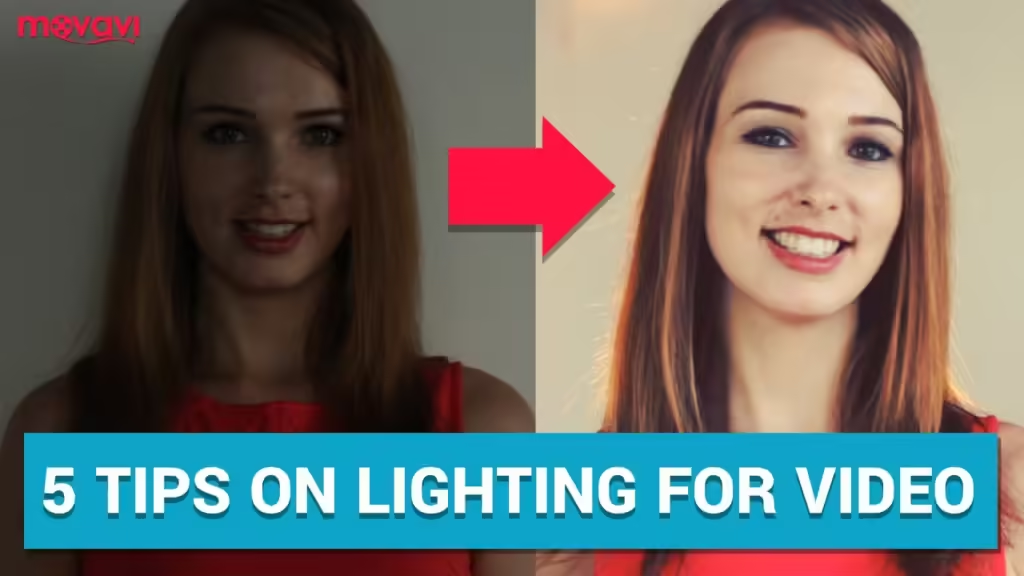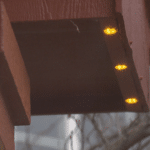How to Get Good Lighting for Pictures, use natural light or soft, diffused artificial light. Avoid harsh shadows and direct sunlight.
Good lighting is essential for capturing high-quality photos. Natural light often provides the best results, especially during the golden hour. This period, just after sunrise or before sunset, offers soft, warm lighting that enhances image quality. For indoor photography, position your subject near a window to take advantage of natural light.
Soft, diffused artificial lights, like ring lights or softboxes, can also work wonders. They minimize harsh shadows and evenly illuminate the subject. Always be mindful of your light source’s direction and intensity. Adjusting these elements can significantly improve your photos, making them look professional and visually appealing.

Credit: www.youtube.com
Natural Light
Natural light is the best source for taking beautiful pictures. It is free and available everywhere. Natural light helps in capturing vibrant colors and details.
Golden Hour
The Golden Hour is the time just after sunrise and before sunset. During this time, the light is soft and warm. It creates a magical glow on your subjects. This time of day is perfect for outdoor photography.
Here are some tips to make the most of the Golden Hour:
- Plan your shoot in advance.
- Arrive at the location early.
- Use a tripod for stability.
- Experiment with different angles and compositions.
Diffused Sunlight
Diffused sunlight occurs when clouds cover the sun. This creates soft and even lighting. It reduces harsh shadows and bright spots. Diffused sunlight is great for portraits and close-up shots.
Here are some ways to achieve diffused sunlight:
- Shoot on cloudy days.
- Use a light diffuser.
- Find shaded areas.
- Shoot indoors near a window with curtains.
Using diffused sunlight will help you get balanced lighting. Your pictures will look more professional.
| Type of Light | Best Time | Characteristics |
|---|---|---|
| Golden Hour | After sunrise and before sunset | Soft, warm, magical glow |
| Diffused Sunlight | Cloudy days or shaded areas | Soft, even, no harsh shadows |

Credit: alaniscolina.com
Artificial Lighting
Artificial lighting can transform your pictures. It helps you control the light. This section explores two popular artificial lighting options: LED Lights and Softboxes.
Led Lights
LED lights are a great choice for photographers. They are energy-efficient and versatile. LED lights come in various colors and brightness levels. They are portable and easy to use. You can adjust them to get the perfect light for your pictures.
Here are some benefits of using LED lights:
- They produce less heat.
- They have a long lifespan.
- They offer adjustable brightness.
- They provide consistent light output.
Softboxes
Softboxes help diffuse light, creating a soft, even glow. They are ideal for portrait photography. Softboxes reduce harsh shadows and give a natural look to your photos. You can use them with different light sources like LED or fluorescent lights.
Advantages of using softboxes include:
- They create soft, diffused light.
- They are easy to set up.
- They improve the quality of light.
- They are versatile for various photography needs.
| Feature | LED Lights | Softboxes |
|---|---|---|
| Heat Production | Low | Depends on the light source |
| Light Quality | Bright and adjustable | Soft and diffused |
| Portability | High | Moderate |
| Setup Ease | Easy | Easy |
Light Positioning
Getting good lighting for pictures is essential for stunning images. Light positioning plays a crucial role in achieving this. The position of your light source impacts shadows, highlights, and the overall mood of your photo. Let’s explore two key light positioning techniques: front lighting and side lighting.
Front Lighting
Front lighting is when the light source is directly in front of your subject. This technique illuminates your subject evenly.
- Reduces shadows: Front lighting minimizes shadows on your subject’s face.
- Even exposure: It provides a balanced and consistent exposure.
- Ideal for portraits: This lighting is perfect for clear and bright portrait shots.
Position your light source at eye level for the best results. This ensures natural and pleasing lighting. Using a ring light can help achieve this effect effortlessly.
Side Lighting
Side lighting occurs when the light source is placed to the side of your subject. This technique creates depth and dimension in your images.
- Creates shadows: Side lighting introduces shadows, adding texture.
- Enhances features: It accentuates facial features and details.
- Dramatic effect: This lighting is great for a dramatic and artistic look.
Place your light source at a 45-degree angle to your subject. This positioning helps achieve a balanced yet dynamic effect. Experiment with different angles to find the perfect shadow-play.
Here is a quick comparison:
| Feature | Front Lighting | Side Lighting |
|---|---|---|
| Shadow Reduction | High | Low |
| Detail Enhancement | Low | High |
| Ideal For | Portraits | Artistic Shots |
Using Reflectors
Good lighting can make or break your pictures. Using reflectors is a simple way to improve your lighting setup. Reflectors bounce light onto your subject, creating balanced and flattering illumination. They are an essential tool for both amateur and professional photographers.
Types Of Reflectors
Reflectors come in various types, each serving a specific purpose. Here are the most common types:
- White Reflectors: These create a soft, neutral light.
- Silver Reflectors: These provide a bright, high-contrast light.
- Gold Reflectors: These add warm tones to your pictures.
- Black Reflectors: These absorb light, reducing reflections.
- Translucent Reflectors: These diffuse light, softening shadows.
Placement Techniques
Proper placement of reflectors is crucial for achieving the desired lighting effect. Here are some effective placement techniques:
- Below the Subject: Place the reflector below the subject’s face. This fills in shadows and creates even lighting.
- Opposite the Light Source: Position the reflector opposite the main light source. This balances the light and reduces harsh shadows.
- 45-Degree Angle: Hold the reflector at a 45-degree angle to the subject. This adds a natural and soft light.
- Above the Subject: Place the reflector above the subject to create a light that mimics sunlight.
Use a combination of these techniques to find the perfect lighting for your pictures. Experiment with different types and placements to see what works best for your subject.
Background And Lighting
Getting good lighting for pictures is crucial for quality images. Both the background and lighting play a big role. This section will focus on choosing backgrounds and avoiding shadows to improve your photos.
Choosing Backgrounds
The background can make or break a photo. Choose simple, clean backgrounds for the best results. A plain wall or a tidy room works well.
- Neutral colors: They keep the focus on the subject.
- Minimal clutter: Avoid distracting elements in the frame.
- Texture: Use subtle textures for an interesting look.
Avoiding Shadows
Shadows can ruin a photo. Here are tips to avoid them:
- Use soft light: Diffuse light reduces harsh shadows.
- Adjust position: Move the light source or subject.
- Use reflectors: Bounce light to fill shadows.
Check the table below for a quick guide on common light sources:
| Light Source | Characteristics | Best Use |
|---|---|---|
| Natural Light | Soft, even | Portraits, landscapes |
| Artificial Light | Control brightness | Indoor, night shots |
| Reflectors | Fill light | Reduce shadows |
Editing And Post-processing
Capturing a picture with perfect lighting isn’t always possible. Sometimes, you need to rely on editing and post-processing to get the best results. This process can dramatically improve your photos. It brings out hidden details and corrects imperfections. Let’s explore how to make your pictures shine through editing.
Adjusting Brightness
Adjusting the brightness can make a big difference in your photos. An image that is too dark or too light can lose important details. Use brightness tools to find a balance. Increase brightness for dark images. Decrease it for overly bright ones.
A balanced image has clear details and vibrant colors. Most editing apps have a brightness slider. Experiment with it until your image looks just right.
Correcting Colors
Color correction can enhance the mood of your pictures. Sometimes, photos may have a color cast. This means the colors look unnatural. Use color correction tools to fix this.
Follow these steps to correct colors:
- Identify the color cast. Is it too blue or too yellow?
- Use the temperature slider. Adjust it to counteract the color cast.
- Fine-tune with the tint slider. Make small adjustments for the best result.
Many editing apps offer auto color correction. This can be a good starting point. But manual adjustments give you more control.
| Editing Tool | Purpose |
|---|---|
| Brightness Slider | Adjust overall light levels in the image |
| Temperature Slider | Correct color cast by adjusting warmth |
| Tint Slider | Fine-tune color balance for a natural look |
Editing and post-processing can transform your photos. Adjusting brightness and correcting colors are essential steps. With these tools, you can make every picture look professional and polished.
Lighting Gear Essentials
Good lighting can make or break a picture. Using the right lighting gear is important. Learn what you need to create stunning photos.
Must-have Equipment
Invest in quality gear for the best results. Here are some must-haves:
- Softbox: Diffuses light for softer shadows.
- Ring Light: Ideal for portraits and close-ups.
- Umbrella Lights: Great for evenly spread light.
- LED Panels: Provide adjustable lighting options.
- Reflectors: Bounce light to reduce shadows.
Budget Options
You don’t need to spend a lot. Here are some budget-friendly options:
- DIY Reflectors: Use white cardboard or foil.
- Natural Light: Take pictures near windows.
- Clip-On LED Lights: Affordable and portable.
- Household Lamps: Use lamps with daylight bulbs.
- Phone Flash: Enhance with a diffuser.
| Equipment | Price Range |
|---|---|
| Softbox | $50 – $150 |
| Ring Light | $20 – $100 |
| Umbrella Lights | $30 – $120 |
| LED Panels | $40 – $200 |
| Reflectors | $10 – $50 |
Common Lighting Mistakes
Getting the right lighting in pictures can be tricky. Many people make common mistakes that ruin the quality of their photos. By understanding these mistakes, you can avoid them and improve your photography skills.
Overexposure
Overexposure happens when there is too much light in your photo. This can make your pictures look washed out and lose detail.
- Use natural light wisely.
- Adjust your camera settings.
- Avoid direct sunlight.
Underexposure
Underexposure occurs when there is not enough light. This makes your photos look too dark.
- Use additional light sources.
- Increase your camera’s ISO.
- Avoid shadows on the subject.
Avoiding overexposure and underexposure is key to great pictures. By following these tips, you can achieve better lighting and enhance your photography.

Credit: blog.be.live
Frequently Asked Questions
How To Get Good Lighting When Taking Pictures?
Use natural light whenever possible. Position the light source behind the camera. Avoid harsh midday sun. Utilize reflectors or diffusers. Adjust camera settings for brightness.
How Do I Get Good Lighting For Product Photos?
Use natural light or softbox lighting. Position lights at 45-degree angles. Use a white background. Avoid direct sunlight. Edit photos for brightness.
How Do I Get Better Lighting For My Iphone Pictures?
Use natural light whenever possible. Avoid harsh overhead lighting. Utilize soft light sources like lamps. Adjust exposure in the camera app. Experiment with different angles.
How Do You Fix Poor Lighting In Photos?
Adjust brightness and contrast in photo editing software. Use exposure correction tools. Apply filters for better lighting.
Conclusion
Achieving great lighting can transform your photos. Use natural light, adjust your settings, and invest in quality equipment. Experiment with angles and positions to find what works best. Remember, practice and patience are key to mastering lighting techniques. With these tips, your pictures will shine and capture attention.



